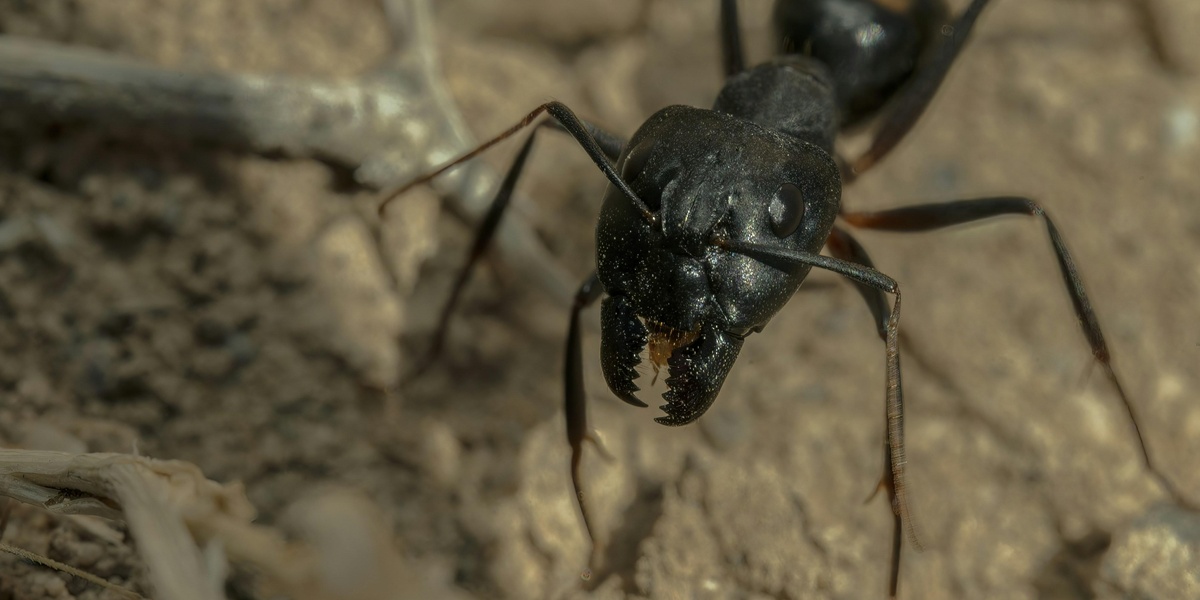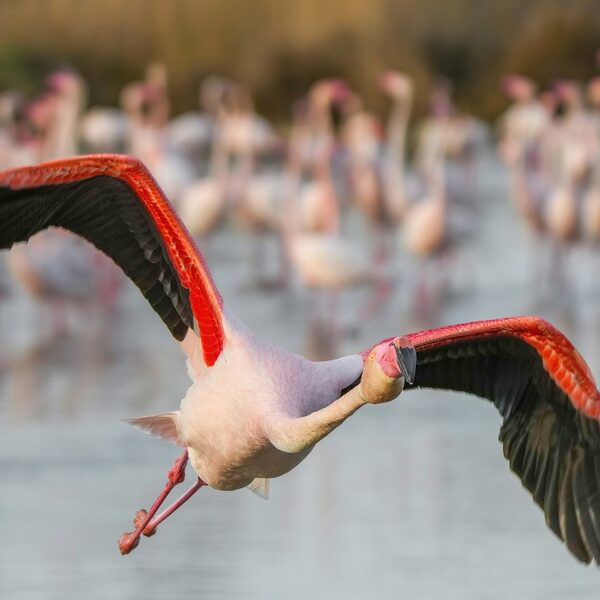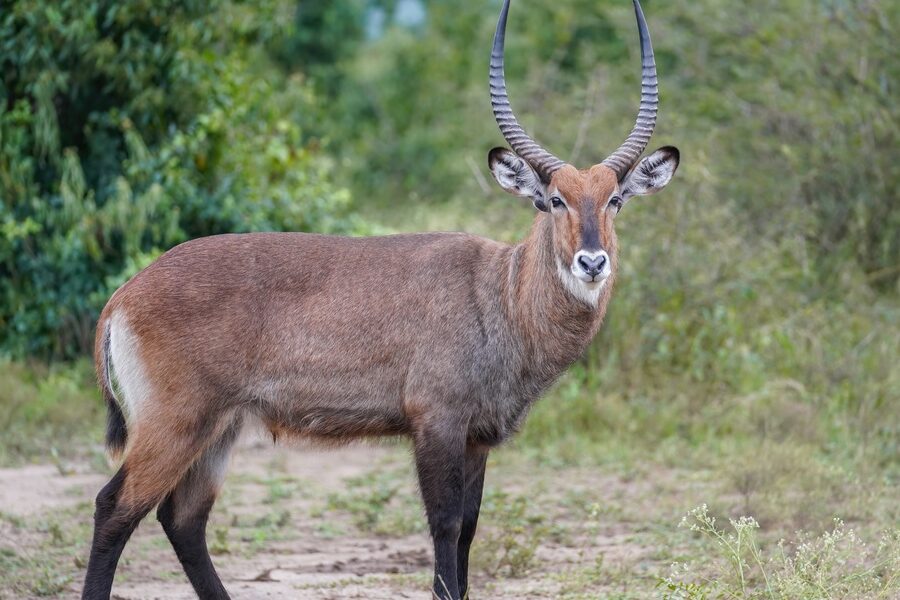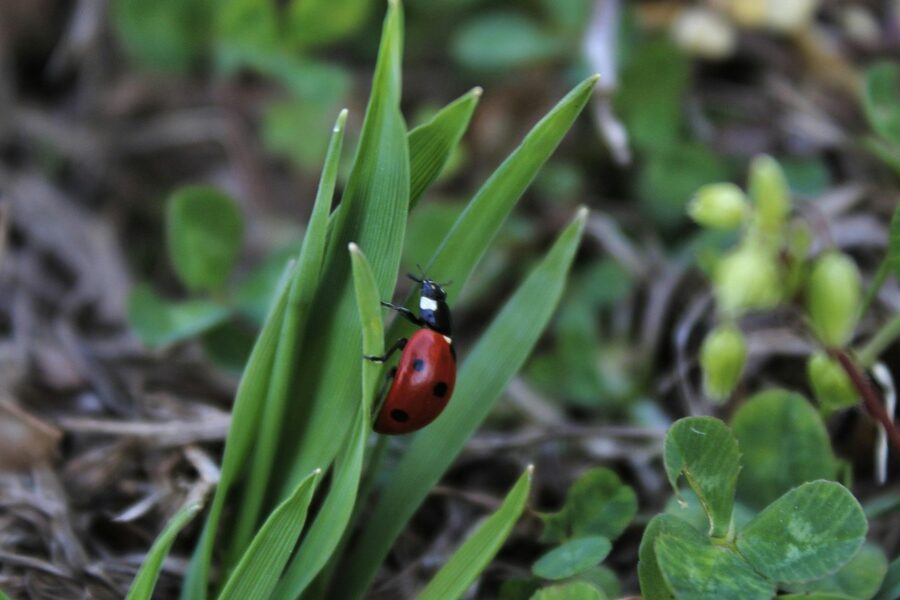In gardens, forests and along streams, some of the smallest creatures quietly shape ecosystems and food webs. You’ll often spot them in leaf litter, beneath stones or clinging to plant stems — tiny, easily missed animals that play outsized roles locally.
There are 31 smallest black animals, ranging from A Money Spider to Winter Stonefly. For each entry, data are organized as Scientific name,Adult size (mm),Range / habitat to help you identify and compare them — you’ll find these details below.
How were these animals measured and ranked?
Adult sizes are based on reported body lengths in taxonomic and field references; where ranges exist the list uses typical adult measurements in mm and notes habitat so you can compare like for like.
Can I expect to find any of these species near me?
Many are widespread (small spiders, flies and aquatic insects), but presence depends on habitat: for example, Winter Stonefly favors cold streams while A Money Spider is common in gardens and leaf litter — check the Range / habitat column below for locality clues.
Smallest Black Animals
| Common name | Scientific name | Adult size (mm) | Range / habitat |
|---|---|---|---|
| Little Black Ant | Monomorium minimum | 1.5 | Eastern North America / Nests in soil, rotting wood, and households. |
| Grain Thrips | Haplothrips tritici | 1.5 | Europe and Asia / Cereal crops like wheat and barley. |
| Minute Black Scavenger Beetle | Scydmaenus tarsatus | 1.5 | Europe and North America / Leaf litter, moss, decaying wood. |
| Black Fungus Gnat | Bradysia spp. | 2-3 | Worldwide / Damp soil, potting mix, greenhouses. |
| A Money Spider | Erigone atra | 2.5 | Palearctic region / Low vegetation, leaf litter, agricultural fields. |
| Crucifer Flea Beetle | Phyllotreta cruciferae | 2.5 | Europe, introduced to North America / Gardens and agricultural fields. |
| Insidious Flower Bug | Orius insidiosus | 3 | North America / Agricultural crops, gardens, weedy areas. |
| Seashore Springtail | Anurida maritima | 3 | North Atlantic and Pacific coastlines / Intertidal zone on rocks and in tide pools. |
| Black Pavement Ant | Tetramorium immigrans | 3-4 | Europe, invasive in North America / Under pavement, sidewalks, and building foundations. |
| Black Carpet Beetle | Attagenus unicolor | 3-5 | Widespread globally / Indoors, feeding on natural fibers. |
| Black Garden Ant | Lasius niger | 3-5 | Europe and parts of North America & Asia / Gardens, lawns, under stones. |
| Black Fly | Simulium spp. | 2-5 | Worldwide, near flowing water / Rivers and streams. |
| Black Scavenger Fly | Sepsis fulgens | 4 | Europe / On or near dung and decaying matter. |
| Black Saldid Bug | Saldula saltatoria | 3.5-5 | Holarctic / Mudflats, shorelines of ponds and streams. |
| Lesser Mealworm Beetle | Alphitobius diaperinus | 6 | Cosmopolitan / Poultry houses, stored grain, dark damp places. |
| Bold Jumping Spider | Phidippus audax | 8-15 | North America / Open areas like fields, gardens, fences. |
| Black Vine Weevil | Otiorhynchus sulcatus | 9 | Europe, now widespread globally / Gardens, nurseries, and plant containers. |
| Black Click Beetle | Athous niger | 10 | Europe / Grasslands, woodland edges. |
| Aquatic Beetle | Agabus bipustulatus | 10 | Europe, Asia, North Africa / Ponds, ditches, slow-moving water. |
| Winter Stonefly | Capnia bifrons | 5-10 | Europe / Clean, fast-flowing rivers and streams. |
| Western Black Widow | Latrodectus hesperus | 10-13 | Western North America / Dark, undisturbed places like woodpiles. |
| Black Carrion Beetle | Silpha atrata | 10-15 | Europe / Woodland, grassland, often near carrion or snails. |
| Common Black Ground Beetle | Pterostichus madidus | 12-18 | Europe / Gardens, woodlands, under logs and stones. |
| Black Corsair | Melanolestes picipes | 15-20 | North and Central America / Under rocks, logs, or in leaf litter. |
| Venezuelan Pebble Toad | Oreophrynella nigra | 20-25 | Tepuis of Venezuela / High-altitude rock surfaces. |
| Devil’s Coach Horse Beetle | Ocypus olens | 20-30 | Europe, introduced elsewhere / Gardens, heaths, woodlands, under stones. |
| Black Darter | Sympetrum danae | 30 | Europe, Asia, North America / Peat bogs, moorland pools. |
| Jet Black Millipede | Tachypodoiulus niger | 25-50 | Europe, introduced to North America / Under logs, stones, and in leaf litter. |
| Ebony Jewelwing | Calopteryx maculata | 45 | Eastern North America / Slow-moving, forested streams and rivers. |
| Black Shrew | Suncus ater | 60-80 | Mount Kinabalu, Borneo / Montane forest floor and leaf litter. |
| Brahminy Blindsnake | Indotyphlops braminus | 60-100 | Africa and Asia, now global in tropics / Loose soil, under logs and rocks. |
Images and Descriptions

Little Black Ant
These tiny ants form massive colonies with multiple queens. When disturbed, groups can break off to form new nests, a behavior called “budding” that allows them to spread with alarming speed through homes and gardens.

Grain Thrips
This minute, slender black insect is a pest of cereal crops. During development, it feeds on the plant’s reproductive organs, reducing both the yield and quality of the harvest. Its incredibly small size makes it difficult to spot.

Minute Black Scavenger Beetle
Also known as an ant-like stone beetle, this tiny, shiny black insect is a predator of even smaller creatures like soil mites. Its minute size and secretive habits mean it is very rarely seen despite being quite common.
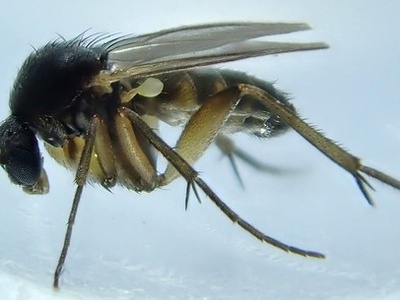
Black Fungus Gnat
While harmless to humans, these tiny black flies are a major nuisance for houseplant owners. Their larvae live in moist soil and feed on fungi and plant roots, sometimes causing significant damage to seedlings and young plants.
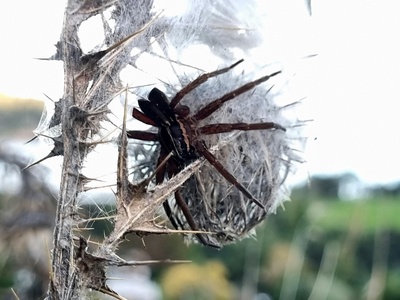
A Money Spider
This tiny black spider is a type of money spider, named from a superstition that it brings good fortune. They are master aeronauts, releasing silk threads to catch the wind and “balloon” for miles to find new habitats.

Crucifer Flea Beetle
This tiny, shiny black beetle gets its name from its large hind legs, which allow it to jump like a flea when disturbed. It feeds on plants in the cabbage family, chewing characteristic small “shot holes” in the leaves.
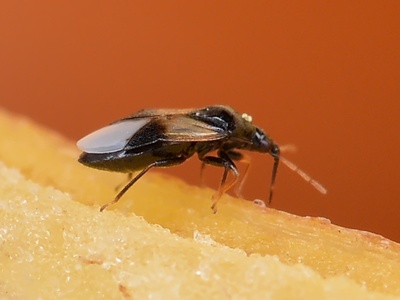
Insidious Flower Bug
Despite its small size, this insect is a voracious predator with a surprisingly painful bite. It is commercially used as a biological control agent, as it effectively hunts and kills pests like thrips, aphids, and spider mites.

Seashore Springtail
This wingless hexapod lives on the edge of the sea in huge numbers. It survives high tide by trapping air in the fine hairs on its body, allowing it to breathe from this makeshift bubble until the tide recedes.
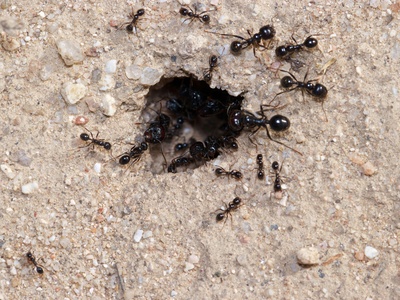
Black Pavement Ant
Named for its preference for nesting under sidewalks, this ant is known for its territorial “wars.” Rival colonies engage in massive battles over territory, often leaving thousands of dead ants strewn across the pavement.
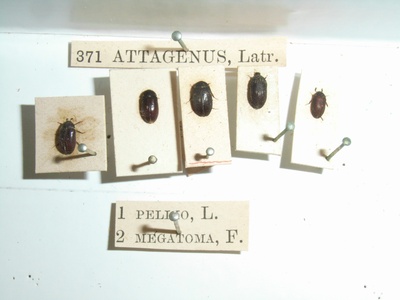
Black Carpet Beetle
The adult beetle is a harmless pollen-feeder, but its larva is a notorious pest. Known as a “woolly bear,” the larva feeds on and destroys carpets, wool, feathers, and other animal-based materials in homes worldwide.
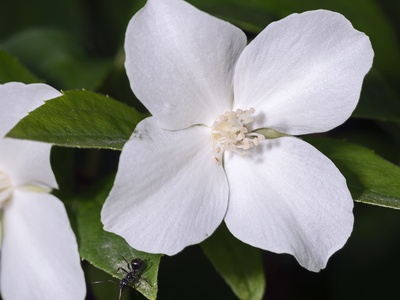
Black Garden Ant
One of the most common ants, they are known for “farming” aphids. They protect aphids from predators in exchange for the sweet, sugary honeydew that the aphids excrete, which the ants then carefully harvest for food.
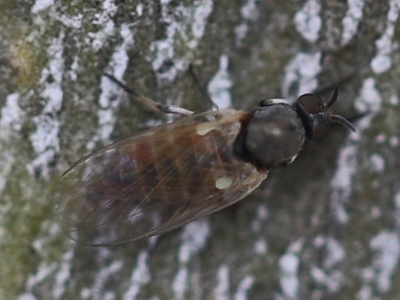
Black Fly
Also known as buffalo gnats, these small, humpbacked flies are infamous for their painful bites. Only the females bite, seeking a blood meal to nourish their eggs, which they lay in clean, fast-flowing water.
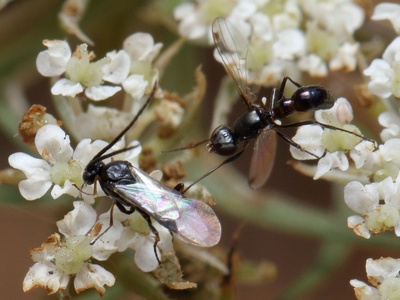
Black Scavenger Fly
This small, glossy black fly often mimics the jerky walking movements of an ant. Males perform a remarkable waving and wing-rowing courtship display to attract females, often gathering in large groups on cow dung to find a mate.

Black Saldid Bug
This small, oval shore bug is exceptionally fast and agile, known for its rapid running and jumping abilities on wet surfaces. It uses its sharp beak to prey on other small insects and invertebrates living in the damp soil.

Lesser Mealworm Beetle
This small, shiny black beetle is a globally recognized pest in places with stored feed, especially poultry farms. Both adults and larvae thrive in high-density environments, feeding on grain, animal waste, and even building insulation.
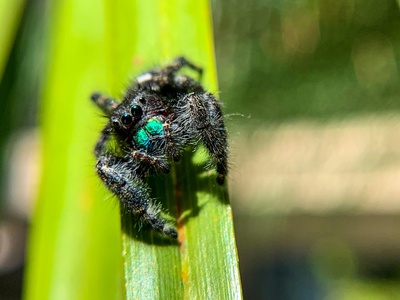
Bold Jumping Spider
This fuzzy black spider doesn’t build a web to catch prey. Instead, it uses its excellent vision from eight large eyes to stalk and pounce on its victims like a tiny cat. Its fangs often have an iridescent green sheen.
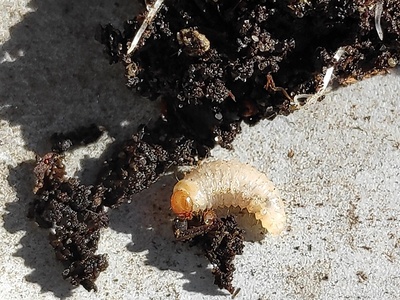
Black Vine Weevil
This flightless, nocturnal weevil is a serious pest of over 200 plant species. The adults notch leaves, but the hidden grubs cause the most damage by feeding on and completely destroying plant root systems from below.
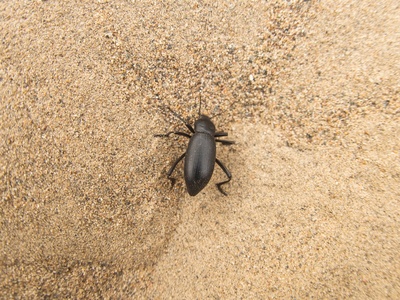
Black Click Beetle
This slender black beetle is named for the loud “click” it makes when it rights itself after falling on its back. The beetle flexes a spine into a notch on its underside, snapping its body into the air with surprising force.

Aquatic Beetle
This streamlined diving beetle is an active predator in both its larval and adult stages. It carries a personal air bubble trapped under its wing cases, which it uses like a scuba tank to breathe while hunting underwater.
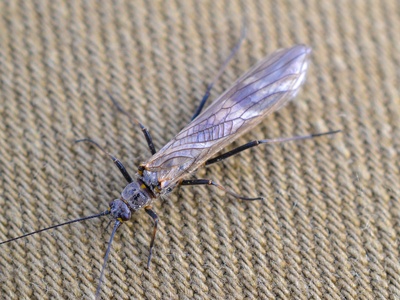
Winter Stonefly
This aquatic insect spends most of its life as a nymph on the riverbed. The short-lived black adults are notable for emerging very early in the year, often when snow is still on the ground, to mate on riverbanks.

Western Black Widow
Famous for the female’s shiny black body and red hourglass marking, this spider possesses potent neurotoxic venom. Despite its reputation, it is shy and bites only in self-defense, such as when it feels trapped against skin.
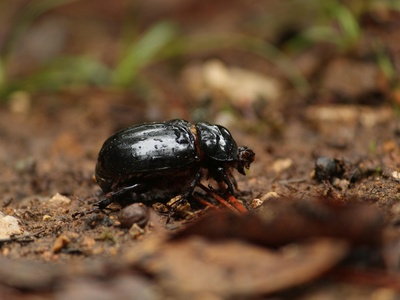
Black Carrion Beetle
This flattened, matte-black beetle is a scavenger that feeds on dead animals and is also a specialized snail hunter. Unlike sexton beetles that bury carcasses, this species feeds on the carrion where it is found, playing a key role in decomposition.
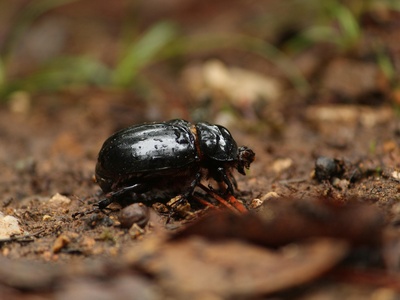
Common Black Ground Beetle
A common nocturnal hunter, this large, shiny black beetle patrols the ground for slugs, worms, and other invertebrates. It is completely flightless, relying on its powerful legs to run down prey, making it a welcome predator in gardens.

Black Corsair
This is a type of assassin bug that is entirely black and often found in a wingless form. It is a patient predator, hiding in debris on the ground to ambush other insects, which it seizes with its powerful front legs.
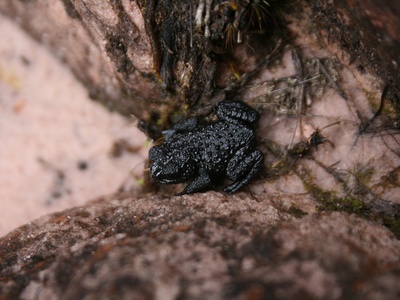
Venezuelan Pebble Toad
This small, black toad lives on windswept stone plateaus. When threatened, it tucks its limbs in and tenses its body, allowing it to roll down slopes like a dislodged pebble to escape danger from predators like tarantulas.

Devil’s Coach Horse Beetle
This large, matte-black rove beetle is a fearsome predator of slugs, worms, and other invertebrates. When threatened, it raises its long abdomen over its body like a scorpion and can emit a foul-smelling defensive fluid.
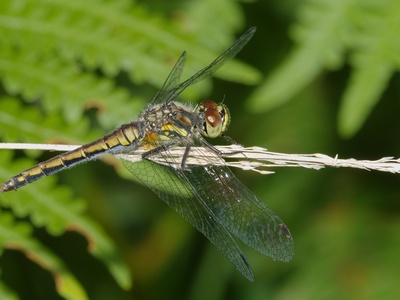
Black Darter
This is one of the smallest dragonflies in its range. While young males are yellowish-brown, they become almost completely black as they mature, making them easy to identify around the acidic bog pools where they hunt small insects.

Jet Black Millipede
This common, glossy black millipede is a vital decomposer, breaking down dead plant material and enriching the soil. When threatened, it coils into a tight spiral to protect its legs and may secrete a foul-smelling defensive fluid.
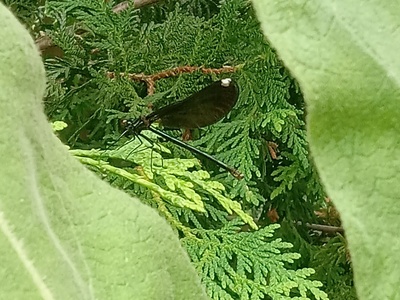
Ebony Jewelwing
This stunning damselfly is easily recognized by its jet-black wings and metallic blue-green body. Males perform a unique fluttering “courtship flight” in front of females to show off their wings and claim territory along the riverbank.

Black Shrew
This incredibly rare mammal is one of the smallest shrews in the world, known only from a few specimens. Living in high-altitude forests, it has a hyper-fast metabolism and must eat almost constantly to survive its energetic lifestyle.
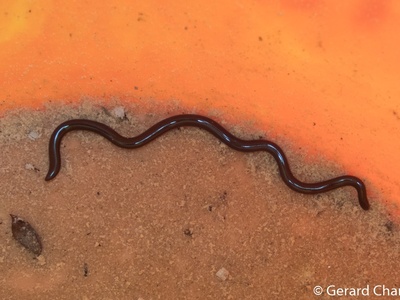
Brahminy Blindsnake
Often mistaken for an earthworm, this is one of the world’s smallest snakes. It is an all-female species that reproduces via parthenogenesis, meaning every individual is a female clone of its mother, a rarity among snakes.
